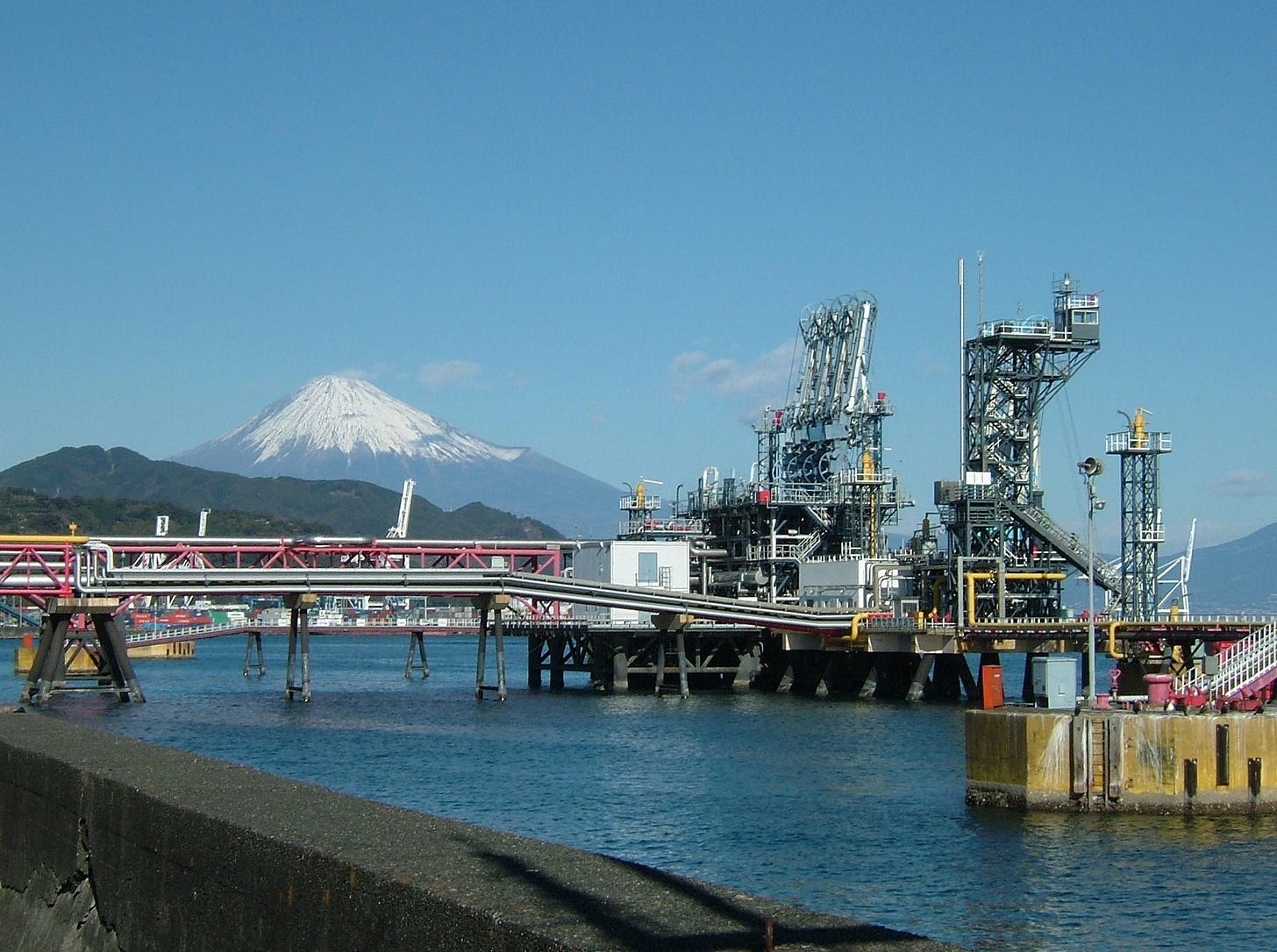How Japan became an LNG juggernaut
Diversification, flexibility, and a turn toward Asia
In this post and over the next few weeks, I'll be writing about how Japan became the largest LNG importer, how it maintained that position for so many years, what the foreign policy implications of relying on LNG imports are, and how LNG figures in Japan's climate change discourse.

I've so far disproportionately focused on the more nascent energy technologies that Japan is developing: perovskite, offshore wind, ammonia, hydrogen, etc.
But the energy source that's truly the bedrock of Japan's energy mix and energy security is gas.
Fossil gas (often known by its street name "natural gas") plays a critical role in Japan’s energy supply, accounting for the third-largest energy source in total primary energy supply (after oil and coal) in 2022. Lacking domestic production and with no cross-border pipelines, Japan has to import gas from abroad in liquid form --- liquefied natural gas, or LNG.
Japan has been the biggest LNG importer in the world since the 1980s, holding that top position until early 2023, when China surpassed Japan’s LNG import volume.
Ensuring a steady supply of LNG has been a core pillar of Japan’s energy security since the 1970s. And its LNG strategy had --- and still has --- profound implications far beyond Japan.
So, how did Japan become a behemoth LNG importer and a juggernaut in the global LNG landscape? To put it very simply, this process unfolded through 4 developments:
diversifying the sources of LNG imports
making large investments in upstream LNG projects internationally
creating a more flexible LNG market in Asia
re-selling LNG to South and Southeast Asia even as Japan's domestic gas demand steadily declines
From the late 1970s until well into the 21st century, Japan's skillful import strategies that made it an LNG juggernaut were driven by an overwhelming anxiety about energy security. But as we'll see, Japan's more recent efforts to supply LNG to Asia stem from commercial motives rather than energy security.
Keep reading with a 7-day free trial
Subscribe to Power Japan to keep reading this post and get 7 days of free access to the full post archives.



